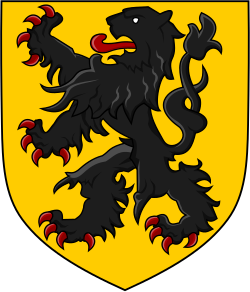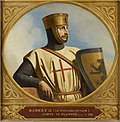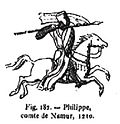| House of Flanders | |
|---|---|
 Arms of the County of Flanders | |
| Country | |
| Founded | 863 |
| Founder | Baldwin Iron Arm |
| Final ruler | Jerusalem: Baldwin I Boulogne: Matilda I Flanders: Margaret II |
| Titles | |
| Estate(s) | Flanders, Hainaut, Constantinople, Boulogne |
| Dissolution | 10 February 1280 |
| Cadet branches |
|
The House of Flanders, also called the Baldwins (Latin : Balduini, French : Baudouinides, Dutch : Boudewijns), was a medieval ruling family of Frankish origin that was founded by Baldwin Iron Arm, son-in-law of Charles the Bald. The House of Flanders was the first dynasty to transform a county function of the Carolingian Empire into a hereditary fiefdom, the County of Flanders, falling under West Francia, created by the Treaty of Verdun in 843. [1]
Contents
From 1051, the House of Flanders also reigned over the County of Hainaut, with Baldwin I of Hainaut. In 1119, on the death of Baldwin VII, the family had a series of setbacks, but in 1191, the family recovered the title of Count of Flanders with Baldwin VIII (Baldwin V of Hainaut).
The dynasty established the Latin Empire of Constantinople during the Fourth Crusade, and it also briefly ruled the County of Namur (1188–1212). The House of Flanders became extinct in 1280 with the death of Margaret II.
A cadet branch, the House of Boulogne, ruled over the County of Boulogne. Members of this house joined the First Crusade, established the Kingdom of Jerusalem, and produced its first kings.





















